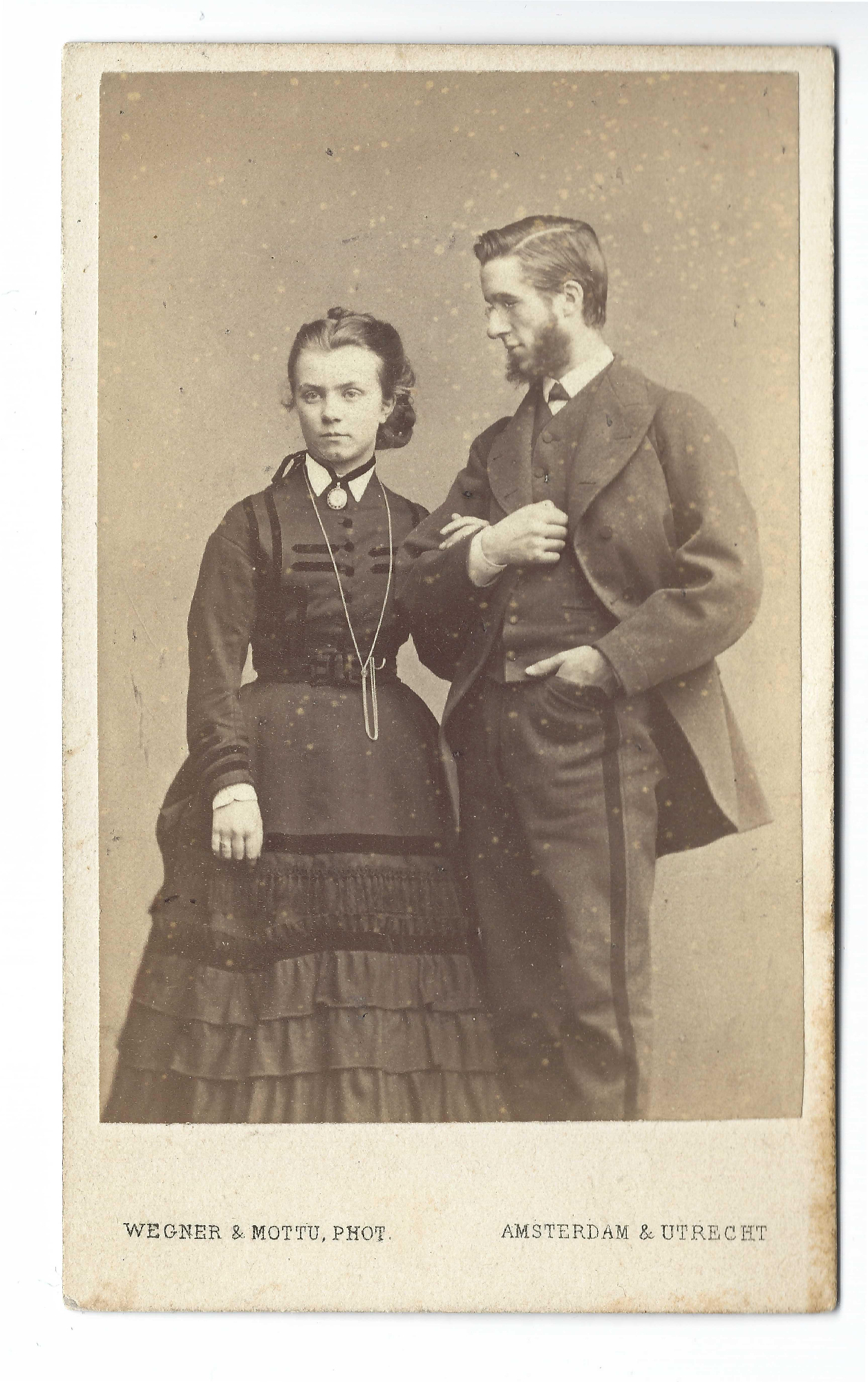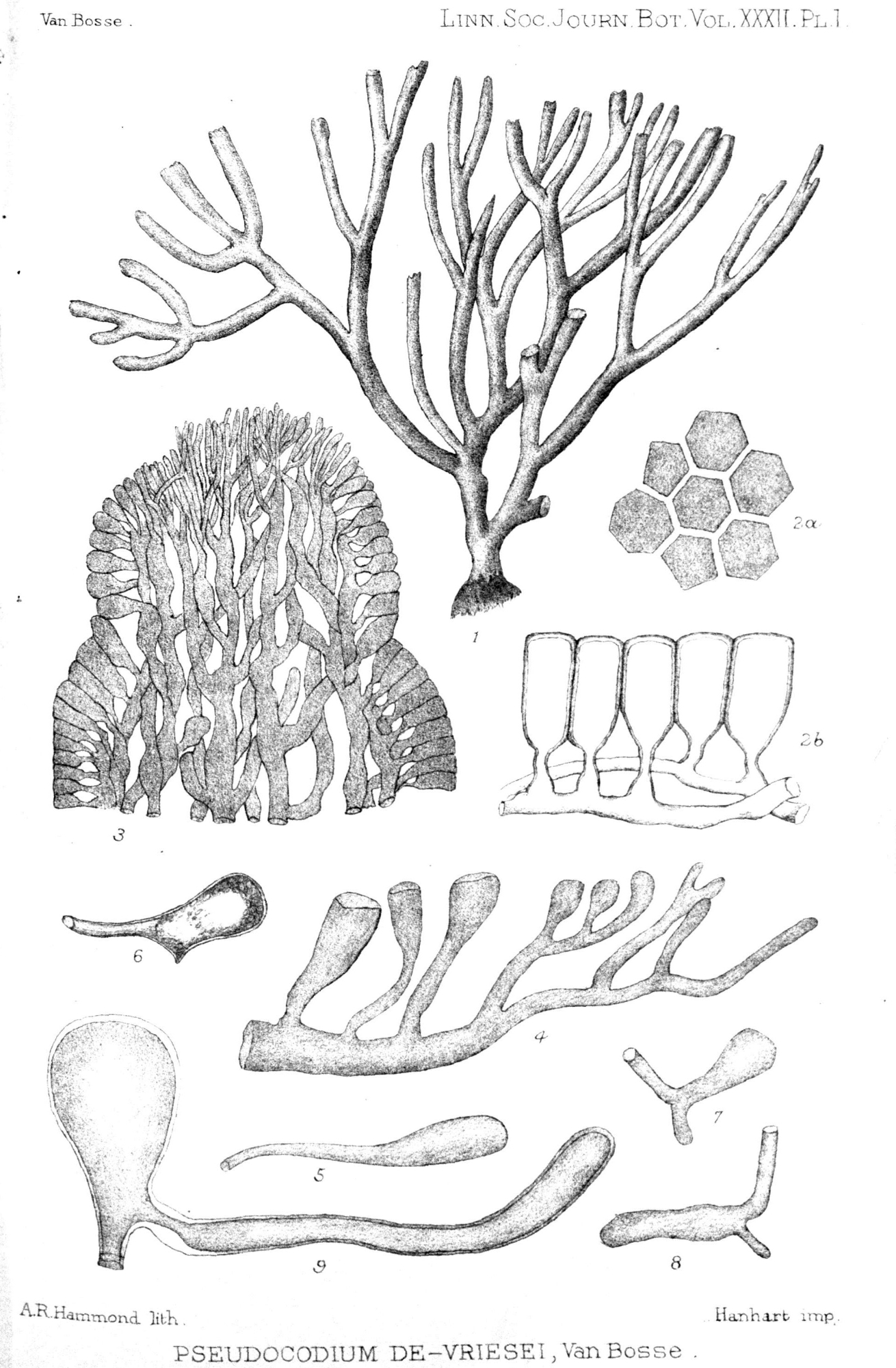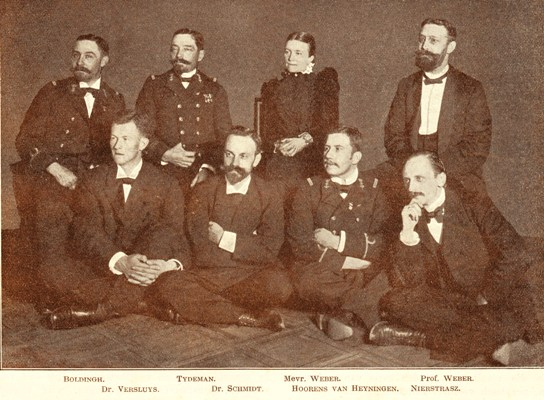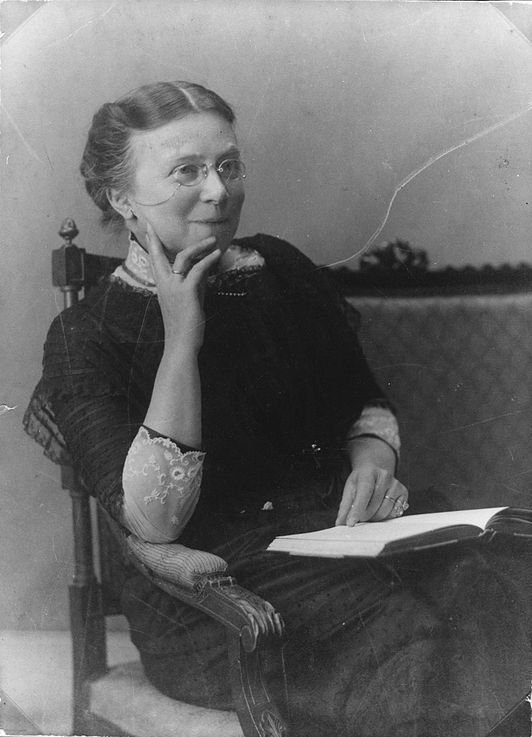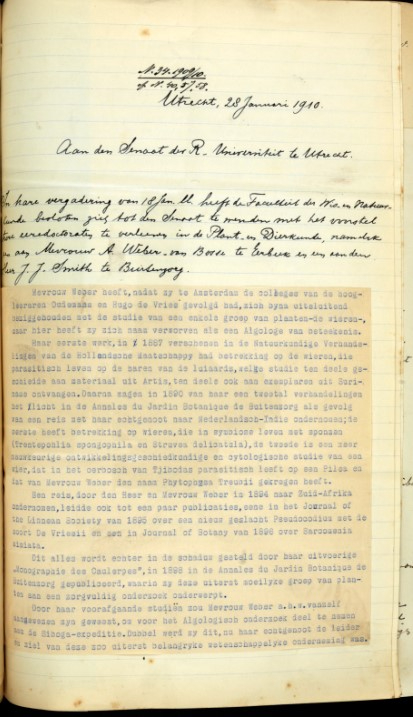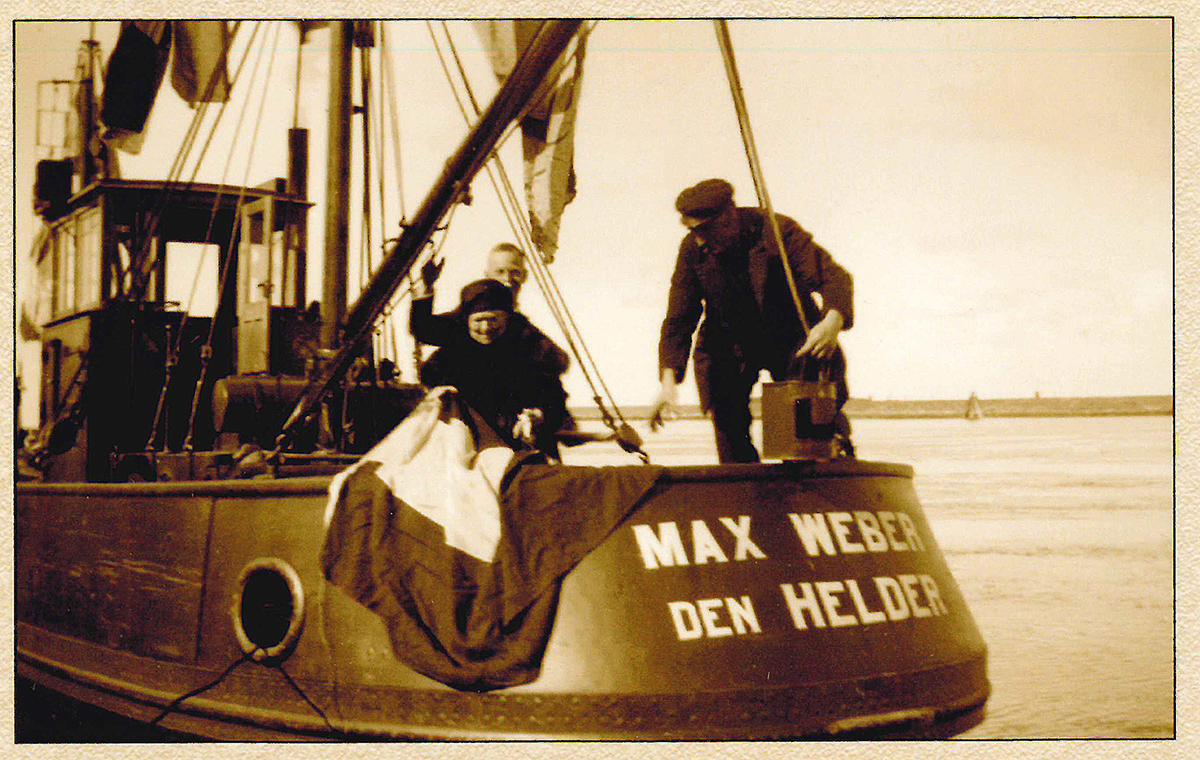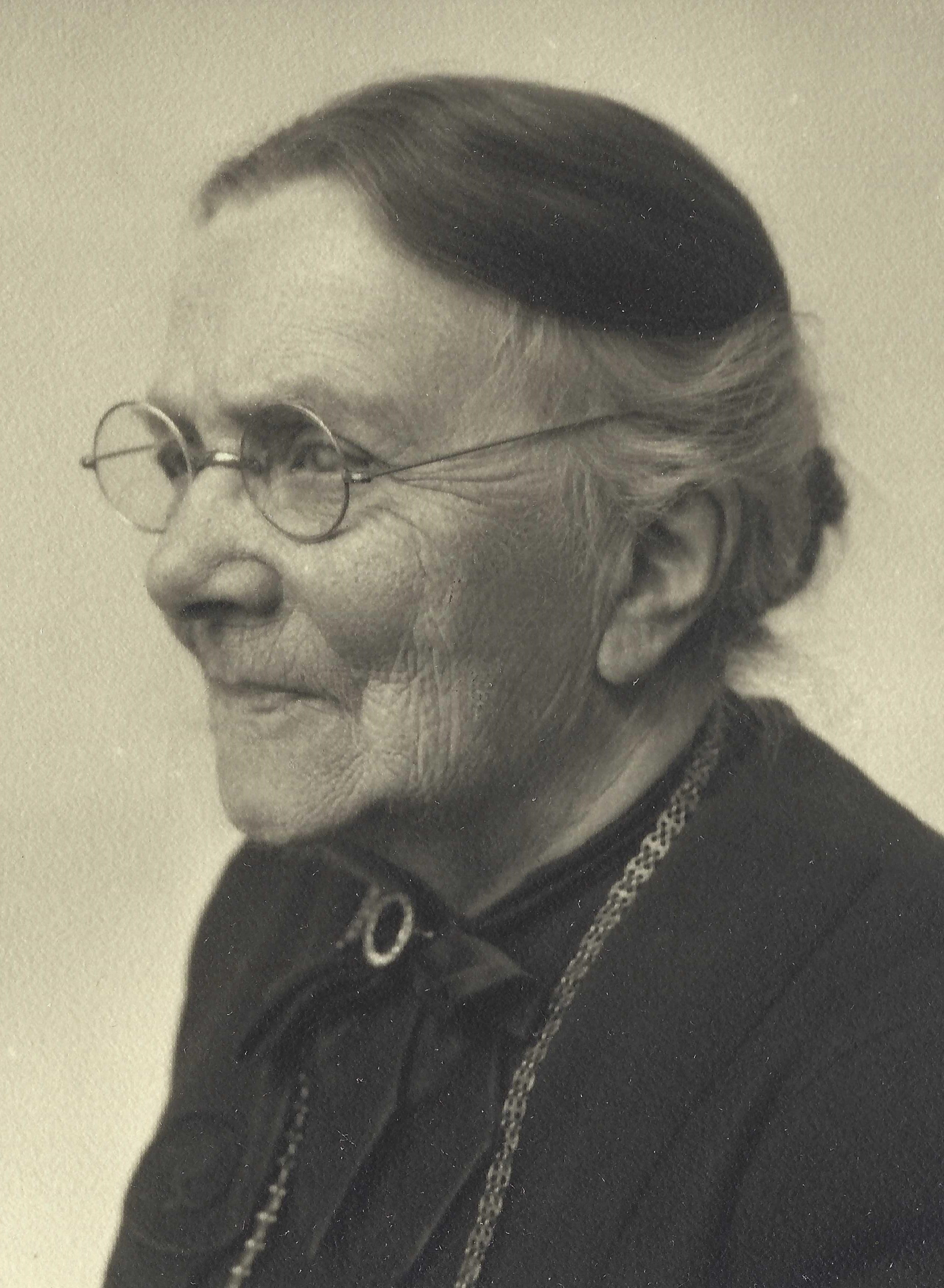Anna Weber-van Bosse, the Netherlands' first female marine researcher of international stature
~~for Dutch scroll down~~
The new flagship of the Dutch research fleet will be named 'RV Anna Weber-van Bosse'. Anna Weber was the first Dutch female biologist to contribute substantially to Dutch marine sciences, as evidenced by her many publications, huge plant collection and an honorary doctorate.
Early interest in exotic plants
Anne Antoinette van Bosse was born in Amsterdam on 27 March 1852. Like most girls from well-to-do back then, Anna was educated at home. From an early age, she had a keen interest in the living world, so she regularly visited Artis Zoo, where unusual exotic animals and plants were to be seen.
When Anna was nineteen, she married the nobleman Lord Wilhem Willink van Collen, a painter. Anna was already taking botany classes at that time. After Wilhem died in late 1878, Anna was 26 years old and a widow. She immersed herself in the natural sciences and - as a hearer - studied botany at the University of Amsterdam, with the then already famous plant physiologist Hugo de Vries. There, Anna met Max Weber, professor by special appointment in zoology, comparative anatomy and comparative physiology. In 1883, on Anna's 31st birthday, they married. Together they would go on numerous scientific trips in the following years, and Weber-van Bosse's herbarium grew rapidly. Her first publications also appeared, e.g. on parasitic algae on the hairs of sloths, based on material from Artis and Surinam.
Attention to tropical marine flora
The tropical world attracted Max and Anna Weber. In 1888, they travelled to West Java, where Anna published several studies on tropical algae, such as the symbiosis of algae with two species of sponges and a parasitic seaweed on a pancake plant in the primary forest of Cibodas.
Until then, science's focus on the tropical world had mainly been on land flora and fauna, but at that time, attention to the marine world also began to grow rapidly. In 1894, Anna and Max travelled to South Africa. From there, Weber-van Bosse described, among other things, a new genus of seaweeds, with the species Pseudocodium devriesii, a tribute to her teacher Hugo de Vries, in the internationally renowned scientific journal the Journal of the Linnean Society.
Fieldwork in a long, wet skirt
The most important trip the Weber couple made was the deep-sea oceanographic expedition with the ship Siboga, in the Indian archipelago (1899-1900). Max led the expedition and Anna had an independent position as a phycologist, an algae researcher. During the voyage, she took many samples of until then unknown species of tropical algae. Incidentally, this was done entirely according to the western rules of the time. In her travelogue, the book 'A year on board H.M. Siboga', Anna Weber describes how she did her fieldwork on the coral reefs 'while my long skirt, having become wet, hindered my movements.' As the only woman on board, Anna had another task: 'At four o'clock I usually served tea to the gentlemen.'
The voyage aboard the Siboga led to Anna Weber's most important scientific contributions. She wrote about the contribution of calcareous algae to the construction of coral reefs in the East Indian archipelago, through publications on purple algae (Florideans) and a major reference work on red algae (Corallinaceae), among others.
Honorary doctorate
Following her impressive record of service, a request was submitted to the Senate of Utrecht University on 28 January 1910 to award Anna Weber-van Bosse an honorary doctorate, as the first woman in the Netherlands. Anna Weber-van Bosse had become a marine researcher of international stature.
In 1922, the Weber couple moved to the Eerbeek estate in Gelderland. From there, Anna Weber continued her research for another ten years: her last publication appeared in 1932, when she was 80 years old. She eventually donated her collection, containing 50,000 specimens of algae, to the National Herbarium in Leiden. In 1935, Anna Weber-van Bosse was appointed Knight of the Order of Orange-Nassau. She died on 29 October 1942, aged 90.
Anna Weber-van Bosse, ’s lands eerste vrouwelijke zeeonderzoeker van internationale statuur
Het nieuwe vlaggenschip van de Nederlandse onderzoeksvloot krijgt de naam ‘RV Anna Weber-van Bosse’. Anna Weber was de eerste Nederlandse vrouwelijke bioloog die wezenlijk heeft bijgedragen aan de Nederlandse mariene wetenschappen, getuige haar vele publicaties, enorme plantencollectie en een eredoctoraat.
Vroege interesse in uitheemse planten
Anne Antoinette van Bosse werd op 27 maart 1852 geboren in Amsterdam. Zoals in die tijd de meeste meisjes van gegoede komaf, werd Anna thuis onderwezen. Van jongs af aan had ze grote interesse voor de levende wereld en ze bezocht dan ook met regelmaat dierentuin Artis, waar bijzondere uitheemse dieren en planten te zien waren.
Toen Anna negentien jaar was, trouwde ze met jonkheer Wilhem Willink van Collen, een kunstschilder. Anna volgde in die tijd al botanische lessen. Nadat Wilhem eind 1878 stierf, was Anna 26 jaar oud en weduwe. Ze ging zich verdiepen in de natuurwetenschappen en – als toehoorder- plantkunde studeren aan de Universiteit van Amsterdam, bij de toen al bekende plantenfysioloog Hugo de Vries. Daar leerde Anna Max Weber kennen, buitengewoon hoogleraar in de zoölogie, vergelijkende anatomie en vergelijkende fysiologie. In 1883, op Anna’s 31e verjaardag, trouwden ze. Samen zouden zij in de jaren daarna talloze wetenschappelijke reizen maken en groeide Weber-van Bosse’s herbarium in rap tempo. Ook verschenen haar eerste publicaties, zoals bijvoorbeeld over parasitaire wieren op de haren van luiaards, op basis van materiaal uit Artis en Suriname.
Aandacht voor tropische mariene flora
De tropische wereld trok aan Max en Anna Weber. In 1888 reisden ze naar West-Java, waarop Anna verschillende studies publiceerde over tropische algen, zoals de symbiose van wieren met twee soorten sponzen en een parasitaire wier op een pannenkoekplant in het oerbos van Cibodas.
Tot die tijd was de aandacht van de wetenschap voor de tropische wereld vooral uitgegaan naar landflora en -fauna, maar in die tijd begon ook de aandacht voor de mariene wereld sterk te groeien. In 1894 reisden Anna en Max naar Zuid-Afrika. Weber-van Bosse beschreef op basis van daarvan onder meer een nieuw genus van zeewieren, met de soort Pseudocodium devriesii, een eerbetoon aan haar leermeester Hugo de Vries, in het internationaal vermaarde wetenschappelijke tijdschrift de Journal of the Linnean Society.
Veldwerk met een lange, natte rok
De belangrijkste reis die het echtpaar Weber maakte, was de diepzee-oceanografische expeditie met het schip Siboga in de Indische archipel (1899-1900). Max was expeditieleider en Anna had een zelfstandige functie als fycologe, algenonderzoeker. Gedurende de reis nam ze vele monsters van tot dan toe onbekende soorten tropische algen. Dat gebeurde overigens geheel volgens de westerse regels van die tijd. In haar reisverslag, het boek ‘Een jaar aan boord van H.M. Siboga’, beschrijft Anna Weber hoe ze op de koraalriffen haar veldwerk deed ‘terwijl mijn lange rok, nat geworden, mij in mijn bewegingen belemmerde.’ Als enige vrouw aan boord had Anna nog een andere taak: ‘Om vier uur schonk ik meestal voor de heren thee.’ De reis aan boord van de Siboga leidde tot Anna Webers belangrijkste wetenschappelijke bijdragen. Ze schreef over het aandeel van kalkwieren in de opbouw van koraalriffen in de Oost-Indische archipel, via publicaties over onder meer de purperwieren (Florideën) en een groot naslagwerk over rode algen (Corallinaceae).
Eredoctoraat
Naar aanleiding van haar indrukwekkende staat van dienst werd op 28 januari 1910 bij de Senaat van de Universiteit Utrecht het verzoek ingediend om Anna Weber-van Bosse een eredoctoraat toe te kennen, als eerste vrouw in Nederland. Anna Weber-van Bosse was een zeeonderzoeker van internationale statuur geworden.
In 1922 verhuisde het echtpaar Weber naar landgoed Eerbeek in Gelderland. Van daaruit ging Anna Weber nog tien jaar door met haar onderzoek: haar laatste publicatie verscheen in 1932, toen ze 80 jaar was. Uiteindelijk schonk ze haar collectie, met 50.000 exemplaren van algen, aan het Rijksherbarium in Leiden. In 1935 werd Anna Weber-van Bosse nog benoemd tot Ridder in de Orde van Oranje-Nassau. Ze overleed op 29 oktober 1942, 90 jaar oud.

